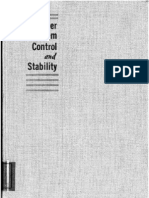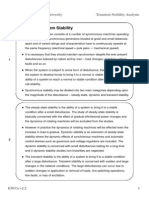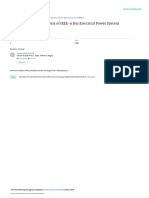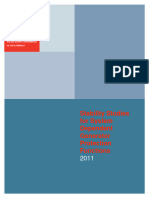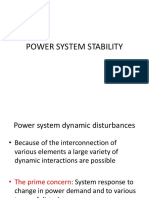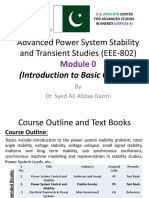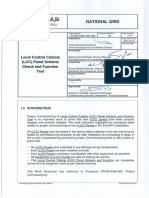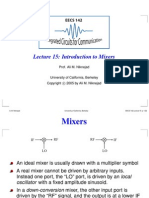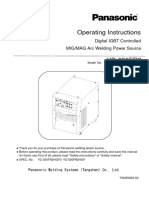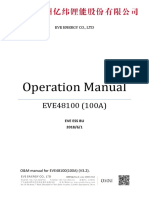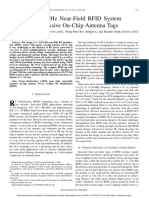0% found this document useful (0 votes)
71 views25 pagesLecture 1 - Stability Introduction
The document outlines a course roadmap covering power systems stability, load flow studies, and power system economics, detailing key concepts and methods in each area. It emphasizes the complexity of interconnected power systems and the challenges of stability, particularly in response to disturbances. Additionally, it includes practice questions and methods for assessing transient stability, highlighting the importance of understanding system dynamics and operational conditions.
Uploaded by
Moses MutembeiCopyright
© © All Rights Reserved
We take content rights seriously. If you suspect this is your content, claim it here.
Available Formats
Download as PDF, TXT or read online on Scribd
0% found this document useful (0 votes)
71 views25 pagesLecture 1 - Stability Introduction
The document outlines a course roadmap covering power systems stability, load flow studies, and power system economics, detailing key concepts and methods in each area. It emphasizes the complexity of interconnected power systems and the challenges of stability, particularly in response to disturbances. Additionally, it includes practice questions and methods for assessing transient stability, highlighting the importance of understanding system dynamics and operational conditions.
Uploaded by
Moses MutembeiCopyright
© © All Rights Reserved
We take content rights seriously. If you suspect this is your content, claim it here.
Available Formats
Download as PDF, TXT or read online on Scribd
/ 25







